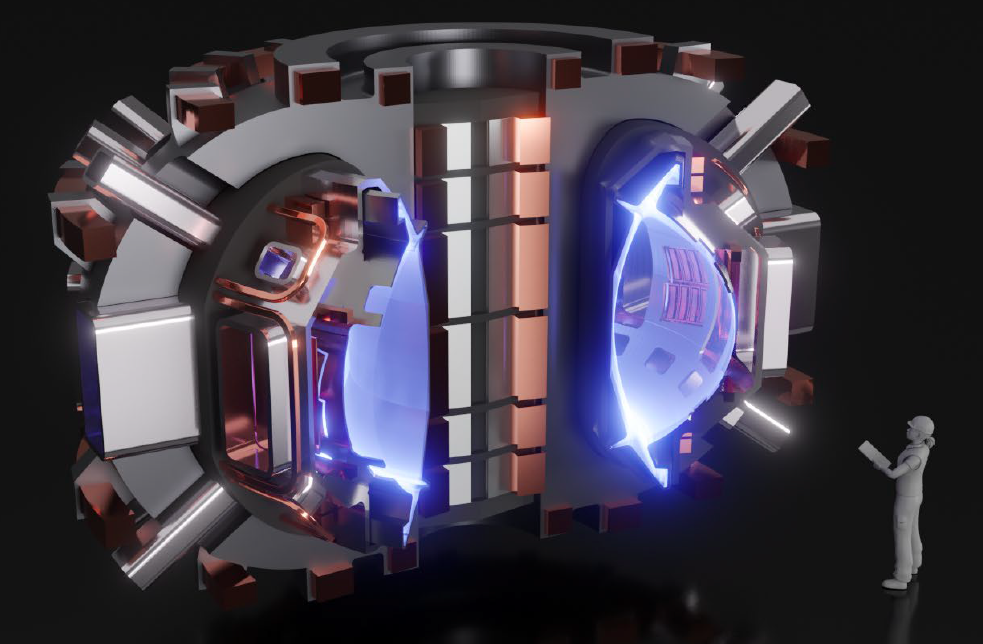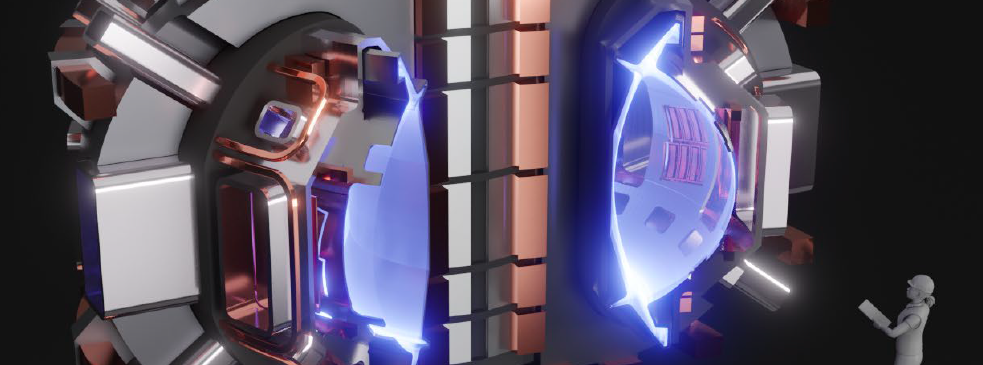-

Cutaway of SPARC engineering design (2020). Image courtesy CFS/MIT-PSFC, Rendering by T. Henderson.
On September 29th (2020), we published a special issue (open-access) in the Journal of Plasma Physics from Cambridge University Press featuring our work on understanding and predicting the plasma physics of the SPARC tokamak. This project is a collaboration between the MIT Plasma Science and Fusion Center and Commonwealth Fusion Systems, but this published work included contributions from 12 institutions (47 authors) in 4 countries. The set of 7 papers provides a rather comprehensive view of the expected physics regimes in the primary plasma discharges in SPARC, and gives robust arguments on why SPARC will be successful in attaining its mission objectives. In particular, SPARC will demonstrate net fusion gain (never achieved so far) in a device of a scale of current experiments. The modest size of SPARC, along with an extremely well qualified team of scientists and engineers, will allow such demonstration in a short time-scale.
The set of peer-reviewed journal articles presented here also represents the endorsement of the wider fusion community in the techniques, assumptions and results reached by our scientific team. Each paper discusses a specific aspect of SPARC physics:
Overview → A.J. Creely et al., “Overview of the SPARC tokamak“
Core → P. Rodriguez-Fernandez et al., “Predictions of core plasma performance for the SPARC tokamak“
Pedestal → J.W. Hughes et al., “Projections of H-mode access and edge pedestal in the SPARC tokamak“
Divertor → A.Q. Kuang et al.,”Divertor heat flux challenge and mitigation in SPARC“
ICRF → Y. Lin et al., “Physics basis for the ICRF system of the SPARC tokamak“
MHD → R. Sweeney et al., “MHD stability and disruptions in the SPARC tokamak“
Fast Ions → S.D. Scott et al., “Fast ion physics in SPARC“
For more information, do not forget to read the press releases that accompanied the set of papers:
- Status of the SPARC physics basis, M.J. Greenwald (Editorial for Journal of Plasma Physics, 2020)
- Validating the physics behind the new MIT-designed fusion experiment (MIT News, 2020)
- Scientists present a comprehensive physics basis for a new fusion reactor design (Cambridge University Press, 2020)
- The SPARC tokamak: A critical next step on the path to commercial fusion energy, A.J. Creely (Cambridge University Press, 2020)
- Physics models predict ample margin to net fusion energy in the SPARC tokamak, P. Rodriguez-Fernandez (Cambridge University Press, 2020)
- Compact Nuclear Fusion Reactor Is ‘Very Likely to Work,’ Studies Suggest (The New York Times, 2020)
- New Scientific Papers Predict Historic Results for Commonwealth Fusion Systems’ Approach to Commercial Fusion Energy (Commonwealth Fusion Systems, 2020)
More press coverage here.
Some history of the project as featured in the media:
- A small, modular, efficient fusion plant (MIT News, 2015)
- MIT and newly formed company launch novel approach to fusion power (MIT News, 2018)
- MIT launches multimillion-dollar collaboration to develop fusion energy (Nature, 2018)
- A new approach to fusion energy starts today (Boston Globe, 2018)
- Billionaires Chase ‘SpaceX Moment’ for the Holy Grail of Energy (Bloomberg, 2018)
- In search of clean energy, investments in nuclear-fusion startups are heating up (Quartz, 2018)
- A new path to solving a longstanding fusion challenge (MIT News, 2018)
- Commonwealth Fusion Systems Raises $115 Million and Closes Series A Round to Commercialize Fusion Energy (PR Newswire, 2019)
- Nuclear Fusion Startup Gets $84 Million to Enter Next Phase (Bloomberg, 2020).
Some of previous public releases specific to the SPARC project:
- The High-Field Path to Practical Fusion Energy, M. Greenwald (PSFC Report, 2018)
- SPARC and the high-field path to commercial fusion energy, B. Mumgaard (APS-DPP, 2018)
- (in Spanish) Fusion en el MIT: El camino del campo magnético de alta intensidad, P. Rodriguez-Fernandez (Nuclear España SNE, 2019)

